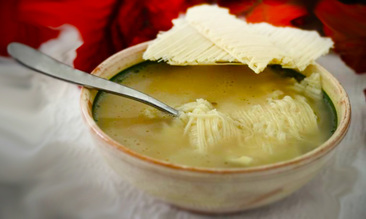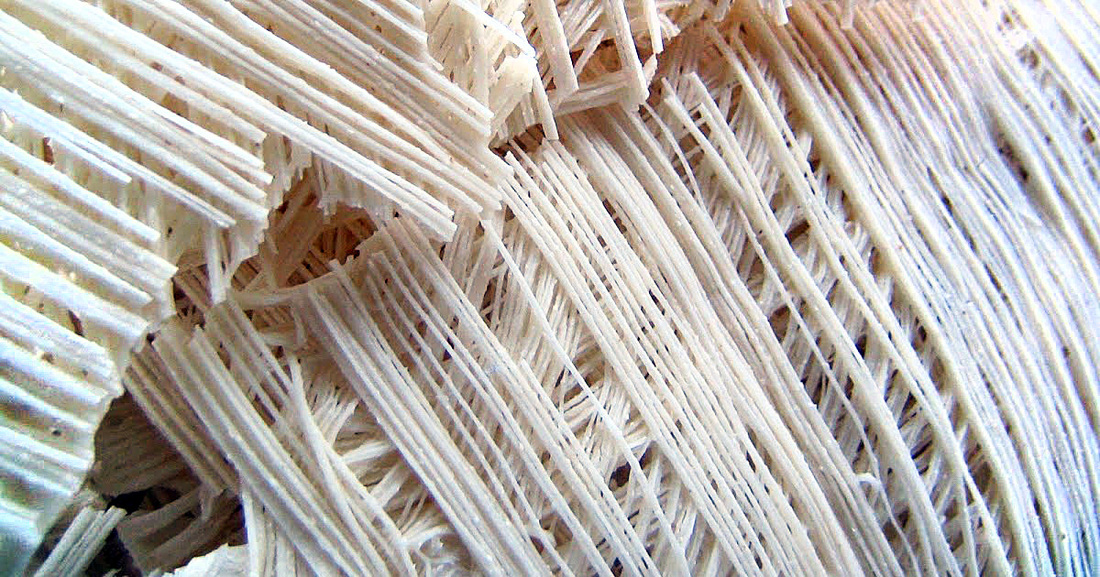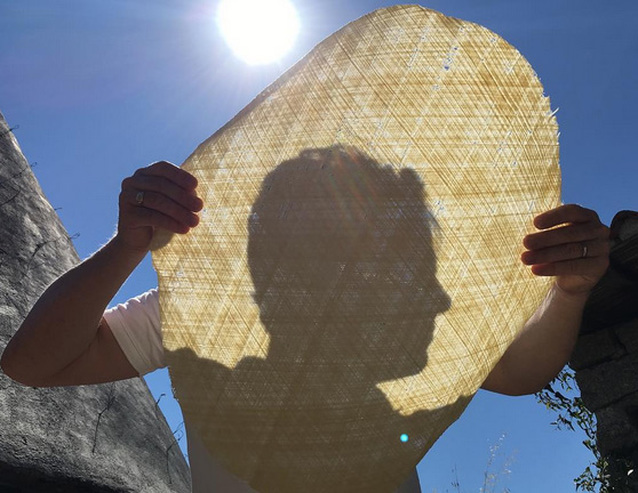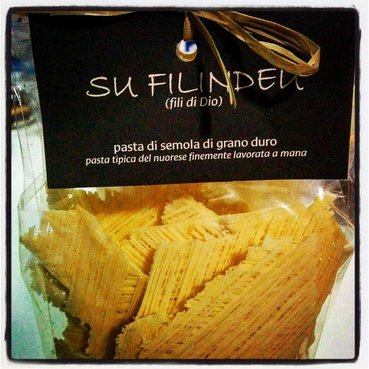|
In the small Sardinian town of Nuoro, there are a very few women (you might count them on one hand) who still know how to make what many say is the rarest type of pasta in Sardinia Italy and perhaps the whole world... Su filindeu, in the Sardinian language. In Italian it is called Fili di Dio, which can be translated as either Wires of God or Threads of God. Filindeu is tied to a religious ritual celebrated in the region of Nuoro. Oddly, this celebration is tied to a murder in the year 800 AD. Accused of murder and being hunted down for his crime, a young man claimed innocence and took refuge in a cave about 15 miles from Nuoro. He was discovered, brought to trial and miraculously (to him) declared innocent. He had prayed to Saint Francis during his time of refuge in the cave and thus built a shrine in the cave in honor of his patron saint. Every May 1st and October 4th, there are processions to the cave and shrine followed by a celebratory feast of filindeu. The dough to make this special pasta is durum semolina, water and a bit of salt. It is then kneaded for a very long time to stretch the gluten, making it very soft with amazing elasticity. The dough is rolled by hand into 8 long, thin snakes, which are folded, halved and pulled, only to be folded and stretched again--32 times in total--resulting in 256 thread-like thin bundles of parallel groups of pasta. These threads are then stretched across a large, flat tray called a fundu, traditionally woven from leaves of the local asphodel plant (a member of the lily family), often used in basket-making. To aide in the stretching, the dough is occasionally dipped in salt water--the timing of this sensed only by the experience of the artisan making the pasta. This process is repeated until a single layer of "threads" cover the entire fundu. the basket is then rotated by about 60 ° with another layers of pasta "threads" laid down. This is repeated a third time creating three criss-crossed layers of "threads". The tray is placed in the sun to dry causing the three layers to stick together while creating a stiff fabric of pasta looking very much like a course textured cheesecloth.  For the feast, the filindeu is broken into pieces and put in boiling mutton broth. Grated pecorino (sheep) cheese is added to complete the soup. I don't know about you, but I've always loved my soup loaded with noodles... If you're ever in Sardinia, look for packages of filindeau shards. Some have realized that this is a real Sardinian treasure and are trying to expand the availability of this pasta. --Jerry Finzi
0 Comments
Your comment will be posted after it is approved.
Leave a Reply. |
Categories
All
Archive
June 2024
|





 RSS Feed
RSS Feed
